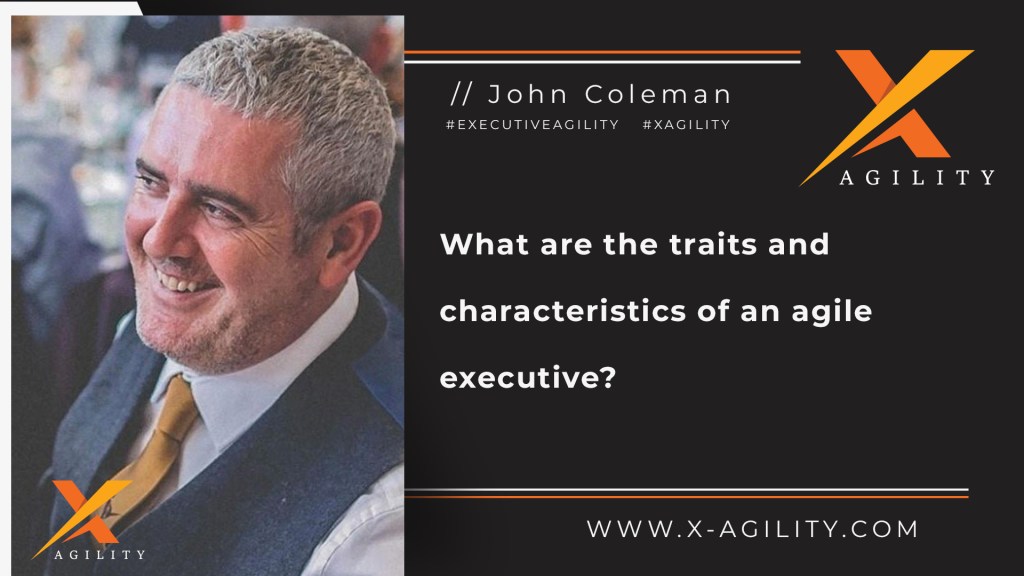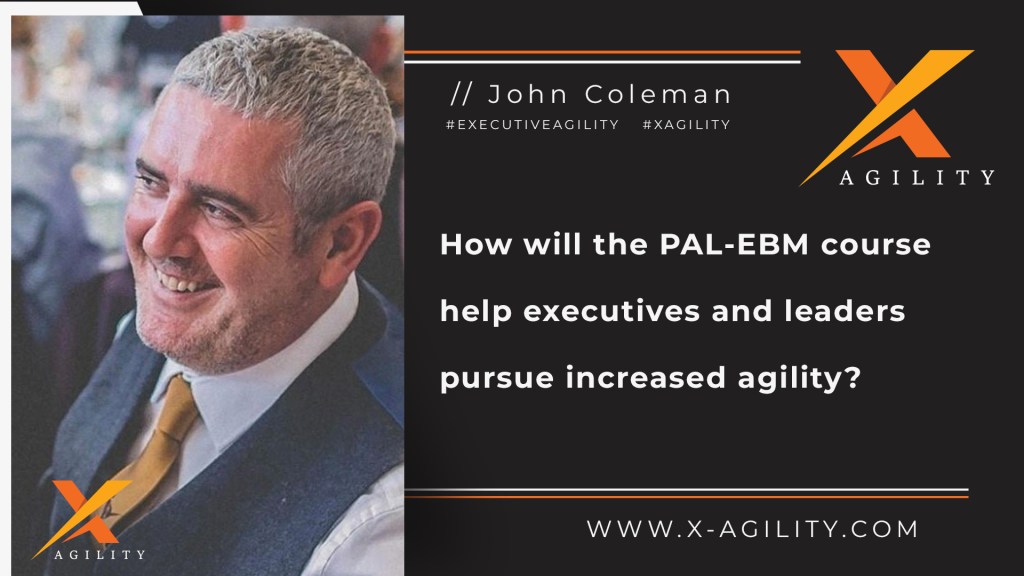How does an executive effectively sell the opportunity of Agility internally?
Selling and adopting agility can be a double-edged sword for executives.
The business case for agile certainly exists, especially given the current economic climate.
- Agile helps us navigate uncertainty and increasing degrees of complexity.
- Agile helps us move forward despite all the things we don’t know about our product.
- Agile helps us move forward despite all the things we don’t know about customers.
- Agile helps us move forward despite all the things we don’t know about competitors.
- Agile helps us move forward despite all the things we don’t know about our markets.
We live and work in dynamic, exciting times where a tailwind can result in massive lift for our brand and significant increases in our revenue, but we also have to deal with significant disruption from competitors and rapidly changing trends and consumer behaviour from customers.
Throw in legislative disruption, globalization, and innovation from the world of AI (artificial intelligence) and you’re navigating a minefield.
The traditional command-and-control, know everything up front before you proceed, style of working just can’t keep up with all the change and disruption. You can’t know everything up front and you cant know for certain that your 3-year project is going to be a success when it launches in 2026.
You could spend millions, do all the right technical things, and build a great product only to find yourself in the dust. Nokia is a great example of that. They didn’t do anything wrong. They had great engineering, a great product, and a great brand. They just couldn’t adapt or respond to change.
Complex Problems.
When we think about agile, we need to explore the problem space.
Agile is a great solution, but it isn’t the answer to every question.
If you work in a simple or complicated space, like transporting bricks or building bridges, you don’t need agile. Traditional project management works just fine. You know what needs doing, you know the best practice for the work, and you know who is best positioned to do the job.
The only variables are cost and time, and you shouldn’t run too far over your estimates with either of those because you’ve built the bridge a hundred times and transported the bricks a million times so you’ve got a fair idea of how long it takes and how much it costs.
In a complex space, we don’t know what we don’t know because we have never solved the problem or built the complex solution before. Even if we bring all the experts into the room, they still won’t have an answer and couldn’t be certain if your objective or goal is achievable or not.
Think NASA and the team responsible for sending a man to the moon in the 1960s.
You have no frame of reference for whether it can be done, you don’t know all the variables involved because nobody has ever been to the moon, and given your current skills and capabilities, you don’t even know whether you could engineer a craft capable of flying to the moon and back.
Product development and innovation in the 21st century is a lot like going to the moon in the 1960s.
So, in my opinion, if you work in the complex space, the business case for agility exists, you don’t need to sell it, you just need to present it effectively.
If you aren’t in the complex space, don’t pitch agile.
The cost of doing nothing.
As we live in a complex world, we don’t know what we don’t know, and we can’t predict the future with any accuracy so it’s hard to pitch a board of directors the benefits and outcomes you will achieve if you shift from project management to agile product development.
Sure, we can guess, and we can identify opportunities for improvement, but we can’t pitch with the degree of certainty that the board want to see.
What is certain, is what will happen if you do nothing. What will happen if the organization plods along in the same way it has for the past two decades.
Doing nothing results in chaos down the line. Failing to act means planning to fail.
Anyone who’s worked in any dynamic, complex system could tell you that doing nothing descends into chaos. If the freight train doesn’t change its course and neither do you, it’s going to be a train wreck.
The cost of doing something.
The Gartner Hype Cycle is a prime example of what happens when hype supersedes clarity and reason. We go from a state of tremendous enthusiasm and anticipation into a deep trough of disillusionment when we figure out that Santa Claus isn’t real.
I make a point of being clear that:
- Change is hard and requires discipline, will, and effort.
- Agile requires significant shifts in our behaviour.
- Agile requires significant shifts in our culture and approach to problem-solving.
- Agile requires significant shifts in our approach to decision-making.
- Agile requires financial investment. It requires practitioners, coaches, or consultants.
The cost of doing nothing far exceeds the cost of doing something, but it is still worth making it clear that there will be a cost to transition to agile, and that an evolutionary approach is going to be a far better plan than a transformative attempt.
- We can’t install a plug and play agile solution, so hard decisions need to be taken.
- Consistent action needs to follow decision-making, rather than lip-service.
- Frequent inspection and adaptation mean that we’re not moving in a straight line. It isn’t predictable nor can we accurately forecast in the adoption phase of agile.
So, it is important that we are transparent upfront, and that we make the challenges just as visible as the opportunities and benefits.
We need people to buy into the need for change, and we can certainly fan the flames of the burning bridge to create urgency, but we also need to focus on being clear about what we need, why that matters, and how that will impact our goals and objectives.
About John Coleman
https://linktr.ee/johncolemanxagility – social and podcast links
https://linkpop.com/orderlydisruption – order training from right here
If you are interested in helping your team or organization achieve greater agility and want to explore agile training options, visit our training page.
If you value coaching and would like to work with a deeply experienced agile and executive coaching specialist, visit our coaching page.
If you are looking for an agile consultant that can help your leadership team identify an appropriate roadmap to organizational agility and take the most effective course of action in your agile transformation, visit our consulting page.
#agile #leadership #agileleadership #certifiedagileleadership #professionalagileleadership #psm #psm2 #scrum #scrumorg #xagility #executiveagility #xagility





